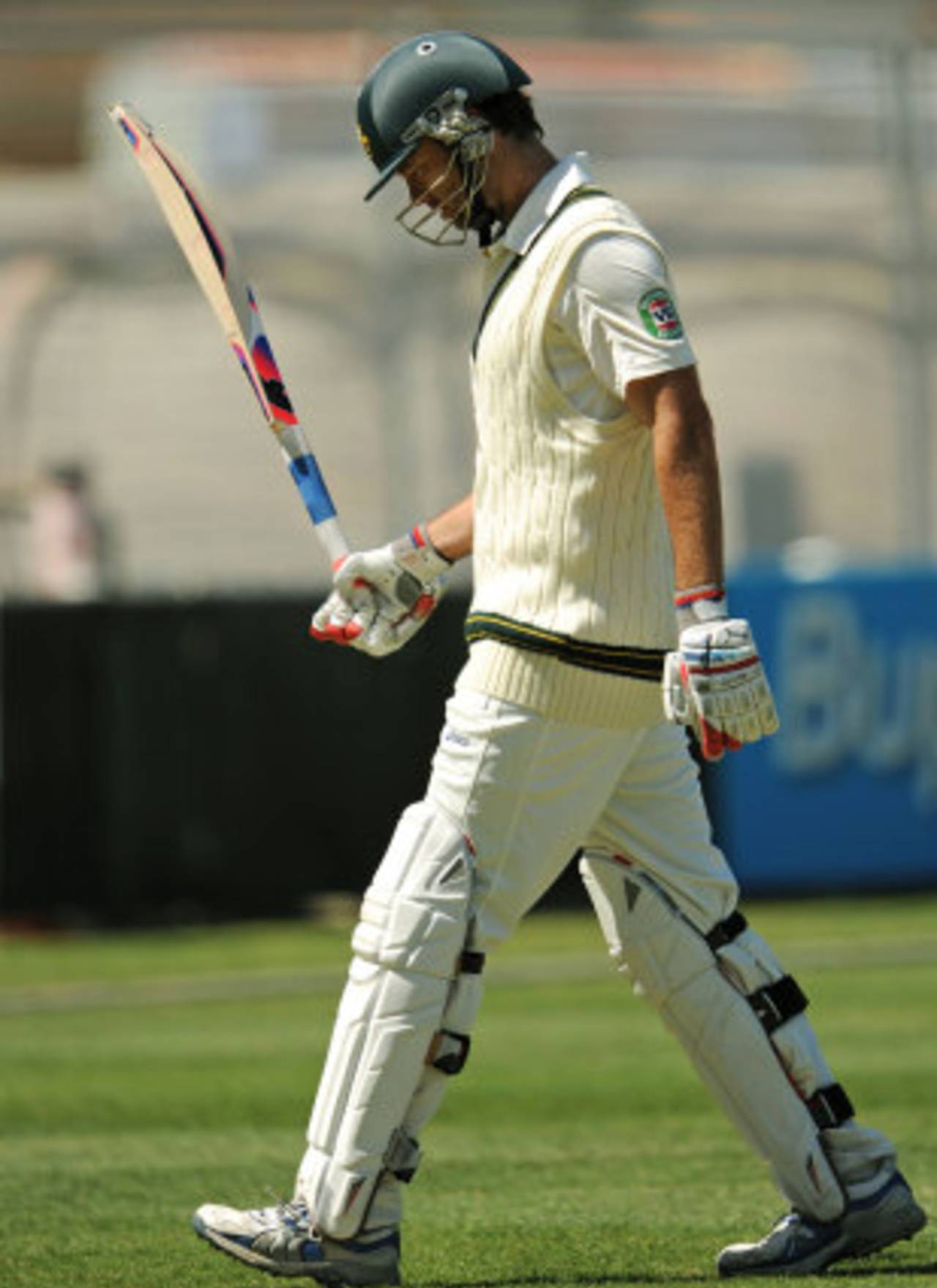Between 1989 and 2005, Ashes series were won exclusively by Australia. It was barely a contest. As England embark on a similar quest of Ashes glory, their belief in consistency shows strong similarities with that great Australian side of world beaters.
More importantly, Australia's consistent failures show similarities with England of the 1990s, which is like basing a model of a brand new car on a broken three wheeler with engine problems.
Contrasting eras can often lose perspective, and statistics often skew reality, but hopefully this can shed some light nevertheless. In order to build a team successfully, the team has to be a settled unit. If it is constantly changing, then it will always be turbulent.
Between the 1989 and 2005 Ashes, the relative number of caps given by England and Australia is stark, and highlights that one built a team with minimal change, whereas the other was frenetic and never settled. Guess which was more successful? You guessed it.
In that period, England gave 90 players a new cap, beginning with Angus Fraser (#537) in 1989 and ending with Kevin Pietersen (#626) in 2005, according to ESPNcricinfo.
Comparatively, Australia gave just 46 new caps out, beginning with Greg Campbell (#347) in 1989 and ending with the only debutant in the 2005 series Shaun Tait (#392). That is half the number England experimented with.
Of course, the correlation does not always mean that fewer caps mean more success, but it is certainly arguable that making fewer changes to a team allows for a side to plan and execute more successfully. After all, if a side is unchanged, it means that it is a working formula, so why alter it?
Clearly, change is used to try and remedy a failing formula, and too much change can exacerbate an existing problem. Certainly in this current Australian side, only Michael Clarke's selection is guaranteed, whereas in years gone past, the team would pick itself (see Justin Langer, Matthew Hayden, Ricky Ponting, Damien Martyn.)
In the first home Test of 2009 versus West Indies, England handed out cap # 643 to Tim Bresnan. Since that moment, and up until the present day, England have got to # 655, which is just 12 more. Quite reasonable for a four-year period.
Australia, from the same date, have had a much more torrid time. In the 2009 Ashes, cap #411 was handed to Graham Manou, Australia have now reached cap #434. That is 24 new caps in four years. Compared with England, that is like adding an extra team of players.
To reinforce the point, not only have England been playing less number of new players, but the number of caps per new player is also important. England's 13 newest debutants and the number of Tests they have played since 2009 have notched up 150 caps, with a third of that almost going to Jonathan Trott with 47.
They are: Tim Bresnan (21), Graham Onions (9), Jonathan Trott (47), Michael Carberry (1), Steven Finn (23), James Tredwell (1), Eoin Morgan (16), Ajmal Shahzad (1), Samit Patel (5), Jonny Bairstow (12), James Taylor (2), Nick Compton (9) and the latest, Joe Root (10).
When it comes to Australia, it is clear there are many more they are prepared to discard.
Graham Manou (1), Clint McKay (1), Ryan Harris (15), Tim Paine (4), Steven Smith (11), Peter George (1), Xavier Doherty (4), Michael Beer (2), Usman Khawaja (9), Trent Copeland (3), Nathan Lyon (24), Shaun Marsh (7), Pat Cummins (1), James Pattinson (12), Mitchell Starc (11), David Warner (21), Ed Cowan (18), Matthew Wade (12), Rob Quiney (2), John Hastings (1), Jackson Bird (3), Moises Henriques (3), Glenn Maxwell (2), and last but not least, Ashton Agar (2).
There are a lot of single figure scores here, much like an Australian batting card, and many of them were 'victims' of rotation policies and indeed untimely injuries.
Yet it is inescapable that there are five players that have played a single Test, four that have played in two, three that have played in three, two in four, and only eight out of 24 that have gone past 10 caps.
Australia have used 11 more players than England in the last four years, yet only two more when it comes to players with over 10 caps. Something is drastically wrong and this is not sustainable. Chopping and changing is simply no way to build a team. Tweaking is fine. England tweak. Australia are not giving their players a genuine chance to cement their place.
Of course, there is no more Ponting or Warne, but Australia know that. They have to make do and give it their best shot, and the only way they can conceivably do this, is by setting out a plan, sticking with certain players and investing faith in them on a long-term basis. It is getting to the stage, whereby the Australians don't even know their best order within the team, let alone who that team should comprise.
England have not scored over 400 this series. They win games because they have a formula, and their line-up, although not firing, is less incompetent than Australia's. They find a way through. Everyone knows their role, and everyone knows that whatever happens, it is highly unlikely they will get dropped.
Settled teams are winning teams. Australia must try to be decisive and consistent. Pick a team, their best team, and stick with it for as long as possible.
If you have a submission for Inbox, send it to us here, with "Inbox" in the subject line Jack Mendel writes about cricket on the Sideline Agenda and runs his own blog, Stumpycricket. He tweets here
